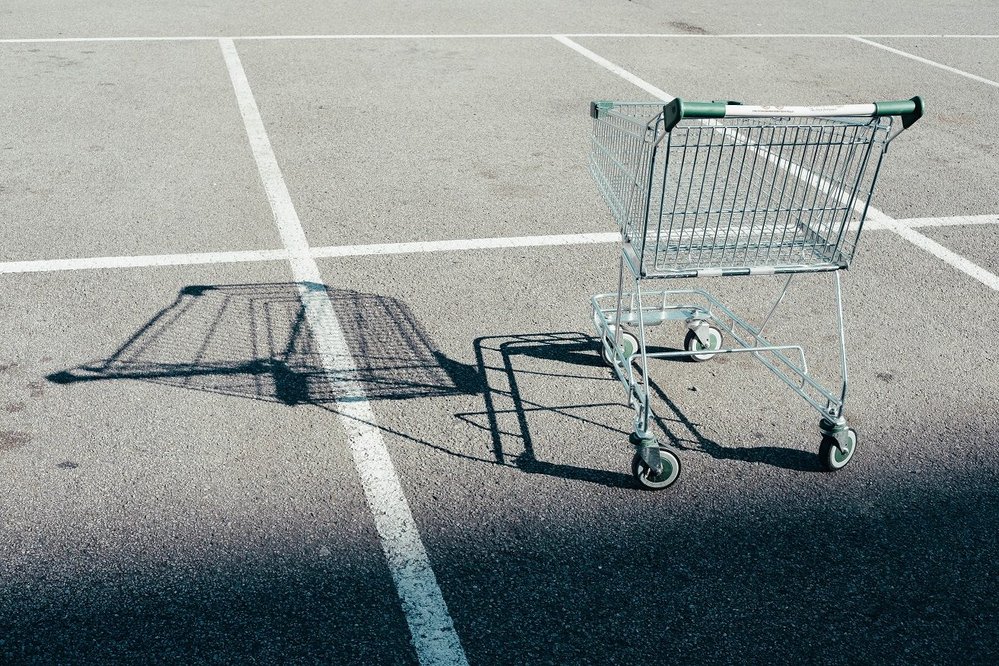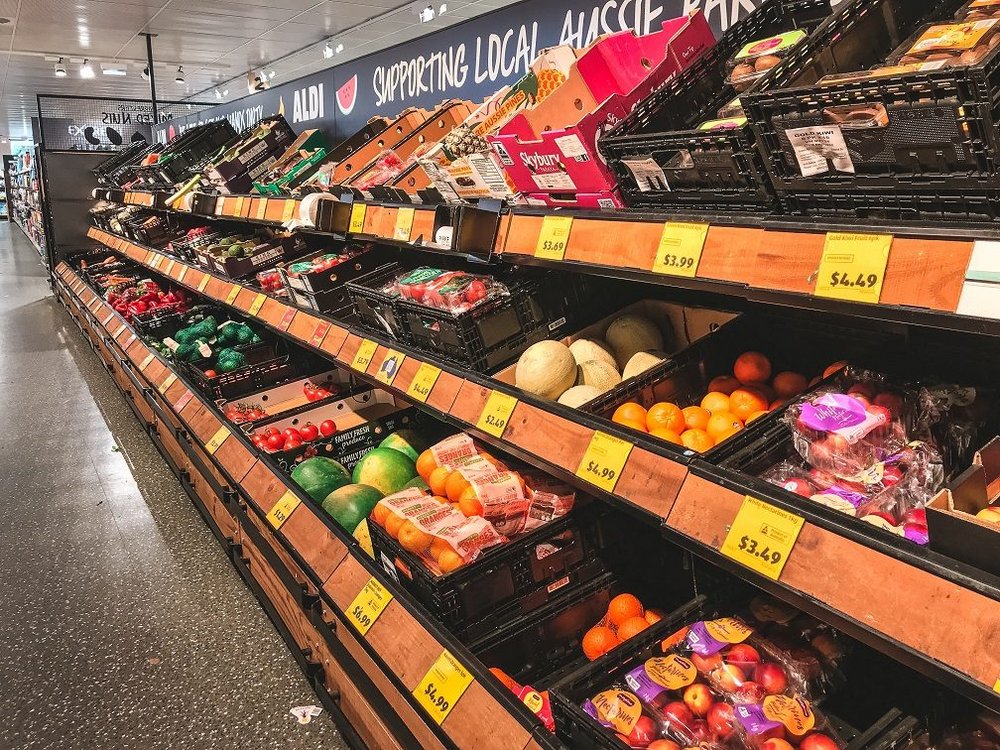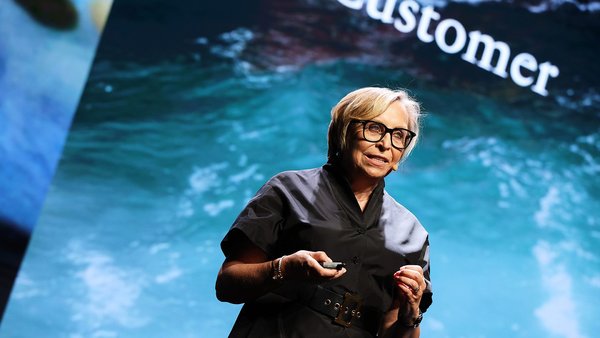Lessons from M&C Saatchi’s cost-of-living consumer study /
Sophie Lewis, M&C Saatchi London’s chief strategy officer, explains what she learned from a month-long research project, conducted entirely through WhatsApp, into how people are adjusting to inflation
James Swift
/
Photo by David Clarke on Unsplash
Somewhere around the middle of last year when the cost-of-living crisis was beginning to bite, M&C Saatchi London’s chief strategy officer, Sophie Lewis, decided she needed to know more.
Consultancies and agencies were publishing reports on the effects of inflation faster than most people could read them, but they typically only provided snapshots of attitudes and behaviours, and they dated quickly. Lewis wanted to create something that was more enduring and more alive.
In February, she and a senior strategist at the agency, Shaun Okoh, began a month-long focus group with a representative sample of 50 UK consumers that took place entirely on WhatsApp.
The participants (who were not identifiable to M&C Saatchi, for reasons of data protection) were paid to take part and over the course of the month, Lewis and Okoh, would send them two questions every weekday morning to be answered by the evening.
The idea was to create a moving picture of how people were feeling about and responding to the increasing prices, and also to allow the agency to ask new kinds of questions as the situation changed.
Lewis had previously used WhatsApp to convene panels of consumers who could respond to questions in real time as a kind of pitch theatre, but this was the first time that she had attempted to use the channel for something so thorough.
We spoke to Lewis to find out what she learned.
How prevalent are cost-of-living-related briefs among clients at the moment?
They are incredibly prevalent, as you might expect. Even if the direct brief isn't about the cost of living, what underpins most briefs at some level is how people are feeling about their financial situation.
Were you a strategist during the previous financial crisis? Have you noticed many similarities in how people are responding to the present situation?
That’s a very polite way of asking how old I am. Yes, I was. And there are certainly some similarities. But what's interesting to me is how much people’s mindsets in relation to their personal wellbeing have changed and evolved since 2008.
To me, 2008 was much more about survival, budgeting, and what I now look back upon as quite a basic approach to a recession. What I've seen in this study is that we're much more evolved and sophisticated at thinking about our own wellbeing and our own mental health. And a lot of conversations that we've seen and heard are about the things that people will continue to do for themselves in order to maintain their own physical and mental health. That's one of the most dramatic shifts, looking at the two periods of time against each other.

Photo by Sage Friedman on Unsplash
How do you begin to apply that sort of insight to marketing strategy?
The way we've been talking about it is that a lot of things you now need to think about as having multiple benefits. What I mean by that is when people maintain their spend on things like gym memberships, those things now provide multiple benefits to them. Going to the gym ostensibly is about being fit and healthy. But people now see the gym as a place where they go to meet people and socialise with their friends, too. And that's what I mean about multiple benefits. Nothing anymore is just about the thing.

Photo by Daniel Bernard on Unsplash
Another thing we've seen is that walking is a much more common pastime. It started with Covid because everybody would go out and get their 30 minutes of exercise or whatever it was. But walking is now about exercise, mental health, and sociability. Now people are going, ‘Oh, instead of going to a bar with my friends, I'm going to meet them for a walk and feel good about my physical and mental health at the same time’. So there's quite a lot of layering of benefits.
Were there any insights or observations that came out of the group that seemed counterintuitive?
It turns out [WhatsApp is] an incredibly intimate form of communication. People will tell you pretty much anything because that's how people use WhatsApp, right? It's used for the most intimate of friend and family conversations. But what was quite surprising to us is how intimate and how honest and how open and how forthcoming people are prepared to be because it's on WhatsApp.
We asked a question about what effect the cost-of-living crisis was having on people's sex and love lives. You could go, ‘Well, people haven't got that much money, so they're having more sex at home because it's free’. That is partially true, but quite a lot of people are having less sex because the worry of the cost of living is such that you're not in that place where you're having fun with your partner.
Equally, we saw lots of people talking about cutting down on alcohol, which you would probably think is unsurprising. But also some people told us about the fact that when they go out, they'll take drugs instead of drinking alcohol because taking drugs is cheaper than drinking in bars.
I haven't spent any time navigating the budgets around drugs versus alcohol but that is interesting to me.
Did they go as far as to tell you which drugs?
No, they didn't actually. The phrase they used was something like the ‘fun’ drugs, which I take to mean the more uplifting substances. So I don't think they mean smoking weed or whatever.
So, coke [cocaine]?
Coke or speed I would think. Now, I'm a 50-year-old woman with eight-year-old twins who lives in Brighton, and I have absolutely no idea what the going rate is on a gram of coke, but I think that's really interesting.
Sophie Lewis, M&C Saatchi
And people are still justifying takeaways to themselves. For us, that means thinking about, ‘Okay, what can the added benefits of a takeaway be?’ If you're Domino's, for example, what else could you give your customers when they're having a pizza delivered? Is it about partnerships with Netflix? Obviously streaming services come up an awful lot because those services and subscriptions are very expensive. But of course, you're at home more, so home entertainment is more important than ever. For us, it's about thinking about partnerships, things that make people's experiences better.
It sounds like what people referred to in previous recessions as the lipstick effect [buying affordable treats].
I think there's a much more complex lipstick effect going on now. There were categories that held up very well in the previous recession, and they were things like chocolate, lipstick, tea and biscuits, and alcohol, I think. I'd have to look back but they were all things that were relatively low price-point counterpoints to a fairly bleak economic outlook. People's mind shift now is about wellness, and it is fundamentally different to, ‘Oh, I'll just give myself a little bit of a lift.’ It's much more about the core of you and about being well enough to cope with the challenges that the cost-of-living crisis thrust upon you.
Before it was more, ‘There's a problem, which is I haven't got very much money and times are tough, and there's a solution, which is lipstick or a bit of chocolate on a Friday night’. Now, I think there's more of an approach of, ‘What I need to do is keep myself well and sane and happy enough to cope with the difficulties that I'm facing.’ Which is really interesting.

Did any insights come out of the groups that were especially helpful for brands to know?
I think probably the most interesting one is thinking about the role that you play in people's lives and being able to justify that role to them. And also being aware of what you are in their lives, which is largely not very important.
We asked people about what they were watching, and pretty much across the board, people are watching things that are uplifting and comforting and are broadly born of escapism, as you might expect. And people are talking about actively avoiding the news, which I think is quite interesting.
But the reason I raise it in relation to brands is that I think if brands know their place, and I mean that in the nicest possible way, [they] can also provide a bit of light relief for people.
There are lots of categories that are about pleasure and not about need. One shouldn't be ashamed of being about making people's lives a bit more fun and not suggesting that you're going to change the world.

Photo by Marques Thomas on Unsplash
Are people spending less money, in general?
There's the sense that people have less money to spend on things in total. There was no one really who said, ‘I haven't felt any difference’.
Did you get any insights into how people make decisions about switching brands?
It varies tremendously. There will be some people who won't mess with essential brands. But the other thing that we saw is the number of places that they're prepared to go to buy items of food. So they might go, ‘Well, I really like the quality of the grapes in Sainsbury's, but broadly I'm going to Aldi because I know I'm going to save however much money on my little basket’.
People are prepared to invest more time in getting what they think they need to make nice food for themselves and their families.
Were there any lingering pandemic behaviours you noticed in people’s responses?
The importance of wellness was very much accelerated by the pandemic. It used to be quite basic, didn't it? We'd go, ‘We’re physically well and that's okay’. Now it's this inextricably linked physical and mental wellness. And what people will do and spend in order to maintain that physical and mental wellness, I think has continued from the pandemic.

Photo by Tom Winckels on Unsplash
Any other advice you’d give to brands who wish to adapt to the cost-of-living crisis?
No brand is an island. Partnership, for a vast majority of brands, is possibly the only way out of some of their situations. What I mean by that is, you've got to think really carefully about mutual benefits that can come from brand partnerships.
If people are dating less, and you're a restaurant, you could partner with Tinder and when two people match, you could offer them a discount to go and eat in your restaurant, for example.
And I think for me finding ways that brands can coexist and help each other in the current context, I think will probably be the way that brands who are in troubled categories can really thrive.
Do people appear to blame brands for hiking their prices?
In general, from what we've seen, people don't question it that much. They will when there are things like significant size reductions, but in general, I'm not sure that they hold brands individually responsible.
Want more of the same? /
We don’t just write about best-in-class campaigns, interviews and trends. Our Members also receive access to briefings, online training, webinars, live events and much more.







